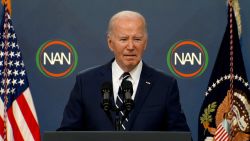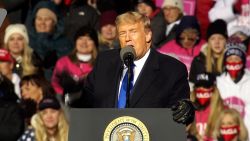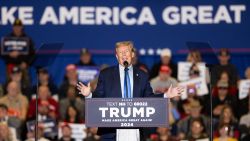In a single sentence, the Supreme Court on Tuesday unraveled Donald Trump’s grand plan to overthrow the 2020 election.
“The application for injunctive relief presented to Justice Alito and by him referred to the Court is denied,” wrote the Court in rejecting an attempt by Pennsylvania Republicans – with the President’s blessing – to block the certification of the 2020 election results in the commonwealth. President-elect Joe Biden beat President Donald Trump in Pennsylvania by just more than 81,000 votes.
Thus ends a month-long effort by Trump and his legal team to find some complaint – any election complaint – that the Supreme Court would consider and, in so doing, pry open the door to him somehow winning an election he quite clearly lost.
“Beginning Monday, our campaign will start prosecuting our case in court to ensure election laws are fully upheld and the rightful winner is seated,” Trump said in a statement on November 7, the same day CNN and most other major news outlets projected Biden would be the 46th president of the United States.
From that moment onward, the Trump team filed a slew of lawsuits in states as far flung as Arizona, Georgia and, yes, Pennsylvania, designed to lean on judges that he had appointed over his first term to deliver a delay or a redo of the election.
The ultimate goal for Trump was to get one of those cases of alleged election fraud in front of the Supreme Court, a court where he had appointed three conservative justices – most recently Justice Amy Coney Barrett – and where the President clearly believed he could expect a favorable ruling
That plan, it quickly became clear, was deeply flawed.
In late November, a federal appeals court flatly rejected the campaign’s efforts to challenge the results in the state.
“Free, fair elections are the lifeblood of our democracy,” wrote Stephanos Bibas, a Trump-appointed federal judge, in the appellate court decision. “Charges of unfairness are serious. But calling an election unfair does not make it so. Charges require specific allegations and then proof. We have neither here.”
The Trump strategy utterly failed before the Supreme Court on Tuesday, failing to even convince a single justice to write a word of explanation (or dissent) for why the case would not be considered.
How did Trump (and his legal team) miscalculate so badly? Simple. Trump believed that the Supreme Court operates the same way he does: Purely transactionally.
See, in Trump’s mind, he had GIVEN Supreme Court seats to Barrett as well as Justice Neil Gorsuch and Brett Kavanaugh. They wouldn’t have been on the court without him (true!) and, therefore, they owed him.
That is, of course, not how the Supreme Court works. The justices are appointed by presidents who identify with one or the other of the major parties in the country, yes. And Republican presidents tend to pick justices who will offer conservative opinions from the bench while Democratic president choose judges with more liberal track records.
But, the Supreme Court isn’t an elected body. The nine members are purposely meant to be kept at a remove from the day-to-day political considerations that elected officials – from the President on down – have to calculate.
And, we know that the justices take that above-politics mission very, very seriously.
“When you live in a polarized political environment, people tend to see everything in those terms,” Chief Justice John Roberts said in 2019. “That’s not how we at the court function and the results in our cases do not suggest otherwise.”
Unless forced to consider political matters – as the court was in Bush v. Gore in 2000 – the justices want to stay as far away from politics as possible.
Then there is the fact that the case Pennsylvania Republicans had appealed to the Supreme Court had already been dismissed by the Pennsylvania Supreme Court.
The only thing the Supreme Court may dislike more than getting in the middle of a political squabble is injecting itself unnecessarily into a matter that has already been considered and dismissed by a lower court.
Add it up and you can see that Trump’s strategy of simply getting a case to the Supreme Court was always doomed to fail. Three of the nine justices may have been appointed by Trump and six of the nine may align with the conservative bloc on the high court.
But they were never going to get in the middle of overturning the clearly stated will of the people because of those facts. That Trump couldn’t understand that speaks to how incapable he is of understanding anyone who doesn’t operate from a purely transactional place.


















